
Did You Know?
- When it comes to leg size, Munchkins look like the feline version of Dachshunds and Welsh Corgis.
- The International Cat Association is the only cat organization to recognize the Munchkin as an official breed of cat.
- The Cat Fancier’s Association and the American Cat Fanciers Association do not recognize the Munchkin because they believe it encourages the breeding of physical deformities.
- Regardless of the misconceptions surrounding the Munchkin’s health, experts have given it a clean bill of health: apart from their short, stubby legs, Munchkins are pretty much just like the average housecat (Cat Fancier Association).
- The Munchkin has an interest origin story: in 1983, Sandra Hochenedel saved two cats from a Bulldog. Both cats were pregnant, and Hochendel kept one and named her Blackberry. Half the litter was born short-legged and she gave one to her friend Kay LaFrance, and the cat was named Toulouse. Blackberry and Toulouse are the ancestors of the modern Munchkin.
- LaFrance created a colony of Munchkin cats on her plantation. They seemed to be all over town as they grew in number, and so they were named Munchkin – like the ones from The Wizard of Oz.
- As you may have guessed, Munchkins are not the best jumpers. However, they can reach kitchen counters if they really want to.
- Munchkin’s are surprisingly speedy. Full of energy, Munchkins manage to get a lot of traction by staying low to the ground.
- Some people refer to Munchkin cats as magpies (the birds) because, just like magpies, they like to beg, borrow, steal, and hide tiny, shiny objects.
- Sometimes you will see Munchkins sitting up on their hind legs, almost rabbit-like. They do this in order to get a good glimpse of something that has gotten their attention.
- Munchkins love to be around company, whether it’s family, strangers, or other pet. They equally love playing around and cuddling on someone’s lap.
- The term “curious cat” perfectly fits the Munchkin. Be prepared to have your entire place explored by this curious cat. He may even grab some things for himself in the process.
Breed Characteristics
All-Around Friendliness

Family Friendly: 5/5
Kid Friendly: 4/5
Pet Friendly: 5/5
Health & Grooming

Shedding Level: 3/5
Ease of Grooming: 2/5
Average Health: 1/5
Trainability

Intelligence Level: 5/5
Vocalizing Tendencies: 3/5
Playfulness Level: 5/5

Overview
Never judge a book by its cover and never judge a Munchkin by its looks. Even though they are small and a short leg cat, they are anything but slow and laid-back. Munchkins are surprisingly quick and energetic, ready to play with other pets and kids at a moment’s notice.
Munchkins are also pretty good at jumping, considering their short legs. They might not get to their destinations in one leap or jump as high as other cats, but they will reach their target eventually.
Munchkins are considered medium-sized cats, usually weighing between 5 and 9 pounds. They come in a variety of coat colors and lengths. Besides having short legs, Munchkins look pretty much like every other domestic cat out there.
Munchkins will thrive as indoor cats in a home where they will be taken care of and loved. If you want to keep your Munchkin around for as long as possible, don’t let him go out unsupervised and keep him indoors to protect him from animal attacks, contagious disease from other cats, and cars.
History
Short-legged cats have been around since at least the 1940’s. In 1944, a British veterinary reported the existence of four generations of short-legged cats. However, this line of cats disappeared during World War II. In 1956 and the 1970’s, more short-legged cats were spotted in Russia and the United States, respectively.
The accepted origin of the modern Munchkin involves Louisiana music teacher Sandra Hochenedel and her friend Kay LaFrance. In 1983, Hochenedel found two pregnant cats under a truck. It turns out they were hiding from a bulldog, so Hochenedel rescued them.She kept one and named her Blackberry. Half of Blackberry’s litter was born short-legged, and so Hochenedel gave one of these kittens to LaFrance as a gift. LaFrance named him Toulouse, and it is from him and Blackberry that the modern Munchkin cat comes from.
Since Toulouse was raised as an outdoor cat and was unneutered, it’s no surprise that there was a population explosion of short-legged stray cats. Hochenedel and LaFrance believed they had a new breed at hand, so they contacted Dr. Solveig Pflueger from TICA’s genetics committee and asked him for some help. After conducting a series of studies, Pflueger concluded that the short-legged trait has an autosomal dominant mode of inheritance and that, unlike short-legged dog breeds like the Dachshund and Corgi, these cats didn’t have any spinal problems.
In 1991, Munchkin cats were presented to the public through a nationally televised cat show held in Madison Square Garden by TICA, The International Cat Association. There was much controversy surrounding the breed, with many critics predicting that the Munchkin would suffer from health problems similar to the ones suffered by their short-legged canine counterparts.
However, foundation breeders Robert Bobskill and Laurie Bobskill proposed the Munchkin as a new breed, and the cats were accepted into the TICA New Breed development program in 1994. In May 2003, Munchkin cats achieved TICA Championship status.
TICA is not the only registry that recognizes the Munchkin cat. Others include the Southern Africa Cat Council, the United Feline Organization, the Waratah National Cat Alliance in Australia, and the American Association of Cat Enthusiasts. However, there is still controversy over the Munchkin over what genetic mutations are disadvantageous and abnormal to the cat.
There are also a number of organizations that refuse to recognize the Munchkin. The Fédération Internationale Féline believes the breed is based on a “genetic disease” and refuses to recognize the Munchkin. Another organization that doesn’t recognize the Munchkin is the Governing Council of the Cat Fancy because they believe breeds like the Munchkin are based on abnormal structure and development.
The Australian Capital Territory government believes that breeding Munchkins is unacceptable because they are malformed animals and there are genetic health problems related to this type of breeding. The Cat Fancier’s Association also refuses to recognize the Munchkin cat. No matter how negatively these organizations perceive Munchkin breeding, owners and Munchkins breeders declare that the breed does not suffer from health problems related to its size and that they are a sound breed.
The Guinness World Records named Lilieput, a Munchkin cat from California, the shortest living domestic cat in the world in 2014. Lilieput is 5.25 inches tall.
Size
 Male Munchkin cats weigh between 6 and 9 pounds, whereas female Munchkin cat weigh between 4 and 8 pounds.
Male Munchkin cats weigh between 6 and 9 pounds, whereas female Munchkin cat weigh between 4 and 8 pounds.
Appearance
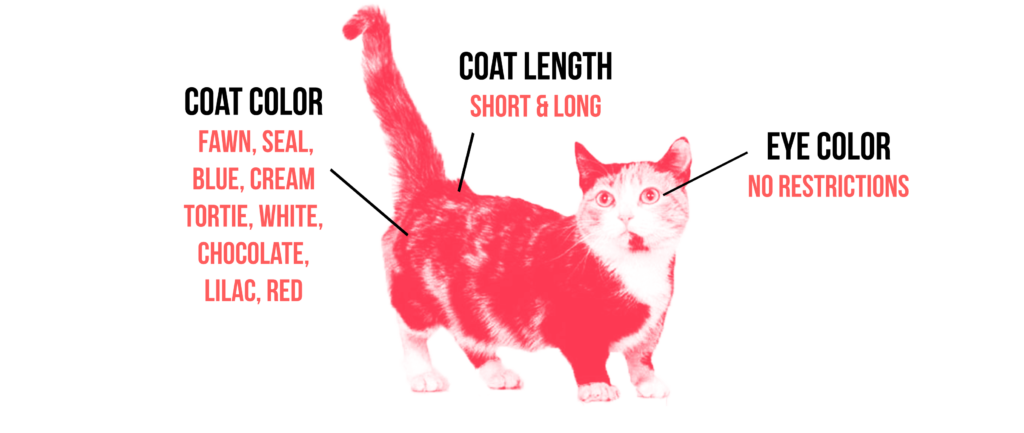 Munchkins are frequently used in outcrossing, so they share characteristics with regular domestic cats. Munchkins have a medium-plush coat and their size can range from small to medium. They may have slightly bowed legs and their hind legs can be a little bit longer than their front ones, giving the impression of a small rise from their shoulder to the rump.
Munchkins are frequently used in outcrossing, so they share characteristics with regular domestic cats. Munchkins have a medium-plush coat and their size can range from small to medium. They may have slightly bowed legs and their hind legs can be a little bit longer than their front ones, giving the impression of a small rise from their shoulder to the rump.
There are Munchkin longhairs and Munchkin shorthairs, both coming in a variety of colors and patterns. Longhaired Munchkins usually have a semi-long silky coat while shorthaired Munchkins have the medium-plush coat.
Behavior
Personality
As stated before, Munchkins may not be able to jump as high as other cats, but they’re still able to jump and run. They are known to be extroverted and playful, responding well to being handled and spending time with others.
Any negative stereotypes come only from people. Neither Munchkins nor do their fellow feline companions see anything wrong with them. They will play and wrestle just like any other cat does, paying no mind to what critics say about them.
Munchkins can usually do anything that regular-sized cats can, even if it means taking the long way. They can jump on couches, tables, and kitchen counters. They also tend to “borrow” tiny, shiny objects and save them for later use, which has led some people to compare them to magpies. They love a good catnip mouse game and love to snuggle with their family afterward.
Children and Other Pets
Munchkins are affectionate cats that love interacting with kids, cats, and even dogs – as long as they’re friendly.
Health
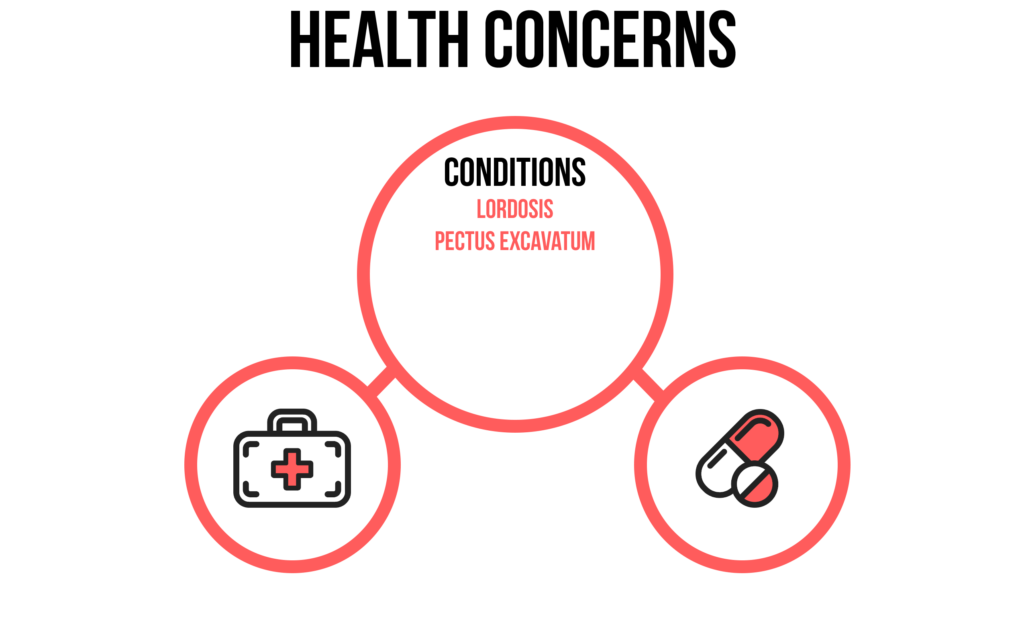 Some have associated the Munchkin’s short-leggedness with the condition known as achondroplasia. However, this condition is usually associated with an enlarged head as well as short legs, which the Munchkins don’t have. Their short-leggedness has also been attributed to hypochondroplasia and pseudoachondroplasia.
Some have associated the Munchkin’s short-leggedness with the condition known as achondroplasia. However, this condition is usually associated with an enlarged head as well as short legs, which the Munchkins don’t have. Their short-leggedness has also been attributed to hypochondroplasia and pseudoachondroplasia.
For a time, especially after they were first introduced, many critics speculated that Munchkins would develop spinal problems the way Corgis and Dachshund do. However, in 1995, several breeders had their older Munchkins X-rayed and examined. To their relief, no signs of joint or bone problems were found.
However, this does not mean Munchkins are completely out of the woods. There are two conditions that have been found to have increased incidence in Munchkins: lordosis and pectus excavatum.
Lordosis is the excessive curvature of the spine. Pectus excavatum, also known as hollowed or funnel chest, is a congenital deformity of the thoracic wall. Both conditions are usually seen in humans suffering from pseudoachondroplasia.
Maintenance
 Care
Care
Always train your kitty (munchkin kitten) from an early age when it comes to grooming. If you do, it will become a habit and won’t cause stress, making the process a whole lot easier for both you and your pet.
If you have trained them well, they will not scratch furniture or soil outside the litterbox. Make sure to give them space, as they are very playful and will knock fragile things down if they stand in the way.
Remember, even though they may act like regular-sized cats, they are still small so keep that in mind when buying their food/water bowls, litter box, and sleeping basket.
Place their sleeping basket or bed in a warm place where there are no draughts. Make sure their water is always fresh and that the door leading to their litter box is always open.
Munchkins are very active and affectionate. Don’t leave them alone for long periods of time and don’t lock them in a room if they are being too active.
Feeding
Munchkins might seem like picky eaters, which is why it’s important to know what they like. Munchkins are closely related to leopards, lions, and tiger, which is why they prefer to eat meat, so make sure the food you get for him has some meat product in there.
Munchkins are very strict when it comes to nutrition. Unlike other mammals, Munchkins need to ear a lot of meat for fat and protein. If you have a dog, don’t feed your Munchkin dog food. Over time, dog food can be fatal because it’s overloaded with carbohydrates (which Munchkins can’t properly digest) and it doesn’t meet their nutritional requirement.
If you see a big, oversized Munchkin, chances are its diet is heavy in carbohydrates. This is dangerous and puts them at risk for diabetes. Eliminate all carbohydrates from your Munchkin’s diet.
When presented with bad food, Munchkins will sometimes decide to go on a hunger strike instead of eating. They run the risk of suffering from liver failure, so keep an eye out for this. If you decide to change the food they eat, do it gradually and in small quantities over a week. Doing this will lessen the risk of upsetting your cat’s stomach and increases the chance of them accepting their new diet.
Visit your vet to figure out how much your specific Munchkin needs to eat daily. It’s very difficult for Munchkins to lose weight after gaining it, so make sure you measure their food appropriately so they don’t become overweight.
Grooming
Overall, Munchkins are easy when it comes to grooming. Clip their nails and clean their ears with cotton buds in a timely manner. If their coats are short, you can comb them once a week and it should be fine. Otherwise, combing and brushing their coats twice a week should do.
Keep in mind that Munchkins can’t stand strong smells, so make sure you get odorless shampoo and litter box filler.
For good overall health, frequently brush their teeth with vet-approved pet toothpaste to ensure your cat doesn’t suffer from dental problems and always has a fresh breath.
The Munchkin’s coat is easy to groom. One with a short coat can get by with weekly brushing. Brush or comb a longhaired Munchkin twice a week to prevent or remove mats or tangles.
Questions
Do Munchkin cats jump high?
Because of their short back legs, Munchkins may not have the same degree of leverage as regular-sized cats do. However, this does not stop them from trying. Munchkins are surprisingly fast runners and can climb curtains and trees like other cats do. Their jump may not be as high, but they can still reach high places through ingenuity and perseverance.
How much is a Munchkin cat?
The cost of a bred Munchkin cat ranges from $300 to $500 in the United States.
Are Munchkin cats genetically modified?
Munchkins were not engineered in a lab but arose from a spontaneous genetic mutation. The cause of their short legs is attributed to an autosomal dominant gene that causes the long bones in a cat’s legs to grow shorter than they would otherwise be.
Resources
Shelters
If you’re looking to adopt or foster a Munchkin cat, please check out the following list to find rescue groups, shelters, and organizations that have Munchkins available for adoption.
Breed Organizations
Below are breed clubs, organizations, and associations where you can find additional information about the Munchkin cat.
Top Breeders
The following is a list of reputable Munchkin breeders.
- MiniPurz Munchkins
- Tiny Legs Munchkins
- JustBecause Munchkins (Munchkin breeder)
Munchkin Cats For Sale
If you’re interested in purchasing an adult cat, click on the links below to find adult Munchkins for sale.
Kittens For Sale
If you’re interested in purchasing Munchkin kittens, below you will find different online marketplaces that have Munchkin kittens for sale.

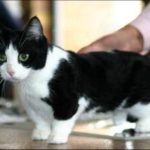
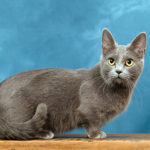
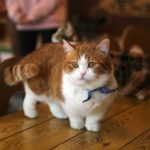
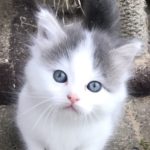
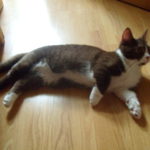
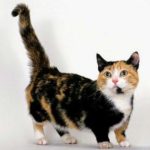
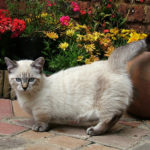
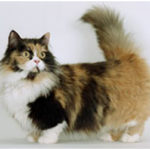
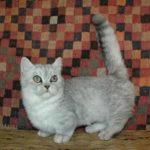
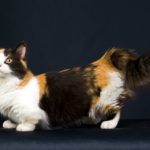
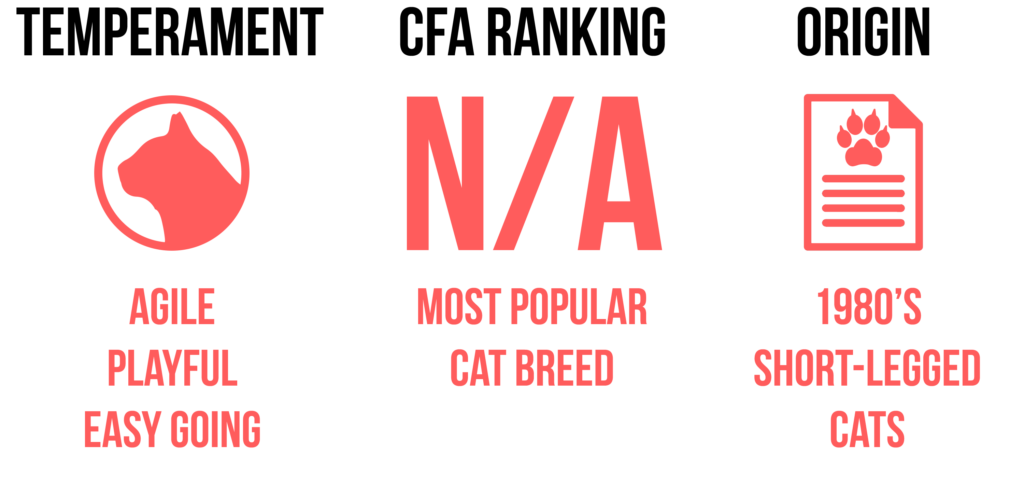
 Care
Care